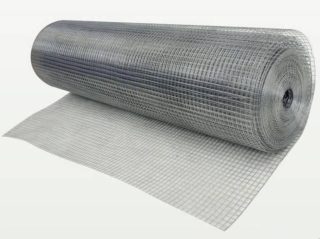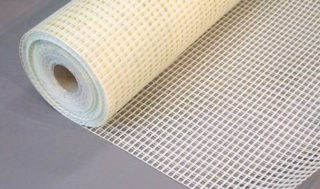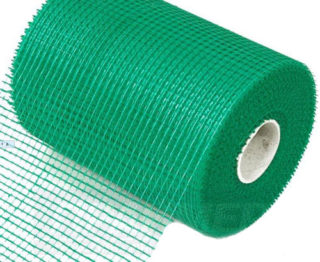The facade mesh is widely used in construction and repair work. Depending on the manufacturing technology, it performs a protective or reinforcing function. Strong and durable material is irreplaceable in construction, used for household and household needs.
What is facade mesh
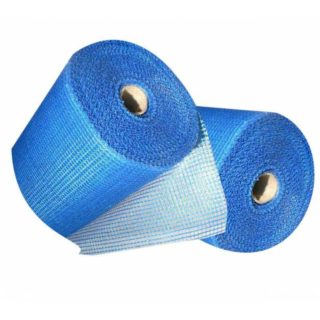
Facade mesh is a light and durable knotted fabric. This technique eliminates thread unraveling when cutting. To improve performance, the material is impregnated with polymer compounds. There are three types of seamless fabric with reinforced edges and holes for mounting by the type of threads:
- polymer;
- fiberglass;
- metal.
Products are available in different shapes (triangular, square) and mesh sizes. A common option is 10 × 10 mm or 15 × 15 mm. Fine-mesh products have a shading effect, they protect the object from environmental influences, dust. A special type of building material is intended for plaster reinforcement. The net is sold in rolls from 2 m wide and 25 m long.
Advantages and disadvantages of building materials
The mesh is an affordable and reliable means of fencing and protection during construction and repair work on the facades of buildings. The advantages of the product include:
- elasticity, can stretch and recover its shape;
- tensile strength;
- UV resistance;
- light weight;
- versatility of application;
- resistance to moisture, aggressive chemical compounds and frost;
- affordable cost.
The safety net can be reused after repairs and dismantling have been completed. Depending on the operating conditions, it lasts 2-5 years.
Disadvantages:
- Not all types of material are sufficiently resistant to the alkaline environment created by the alkaline solution.
- The polymer web is deformed when exposed to high temperatures.
- If the outer layer is damaged, the metal sheet corrodes.
The construction mesh is easy to install due to the considerable length and width of the web in a roll. The light weight of the material makes it easy to transport.
Application area
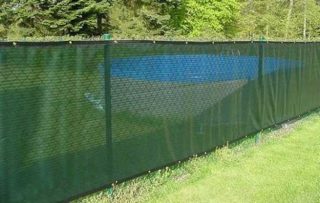
The main area of application of the facade mesh is various stages of construction work. The canvas hides buildings during renovation, giving them an aesthetic appearance. Polyethylene mesh is used for protective purposes:
- prevents falling objects and debris from falling on people and cars;
- covers finishing areas from the effects of precipitation and dust;
- hides scaffolding.
Covering facade mesh is also used in other areas:
- Agriculture - protection of vegetables and trees from sunlight and hail damage, construction of aviaries for poultry.
- Arrangement of fences for sports grounds, tennis fields, summer terraces and gazebos. The facade mesh, stretched for the fence in the country, will become an alternative to the metal chain-link.
Reinforcing material serves to strengthen the plaster layer and prevents cracking. It is used not only on the outside of buildings, but also when leveling internal walls, filling the floor. Plastering mesh allows you to create a solid base when finishing ceilings and slopes.
Facade mesh functions
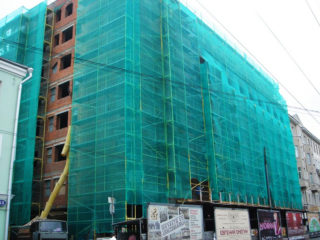
The building material has two main functions:
- protective;
- plastering.
In the first case, it is used for fencing scaffolding and external walls of the building. The material is installed to ensure safety requirements. In the historic districts of the city, it hides unfinished facades that do not fit into the artistic image of the place. The optimum density of the covering mesh for the facade is 75 g / m2. m.
The second function of the products is to strengthen the solution when decorating the walls, to eliminate cracking. Fiberglass and metal mesh are suitable for reinforcement. The material provides a strong bond between the plaster and the base. The mesh is used for a wet facade to increase the resistance of the finish to mechanical stress, tensile and shear stress. It is indispensable when you need to throw in a thick layer of mortar.
Types of material
In the production of mesh, 3 types of materials are used: fiberglass, metal and polymers. All of them are durable, safe and resistant to aggressive environments.
Metal
Pros:
- fire safety;
- strength;
- the ability to lay a thick layer of plaster.
The disadvantages of the material include significant weight, electrical conductivity and tendency to corrosive processes in the absence of galvanizing.
Glass cloth
Pros:
- resistance to aggressive environment;
- not afraid of moisture;
- operated in a wide temperature range;
- elasticity;
- UV resistance.
Fiberglass provides the necessary strength of adhesion of the mortar and the base, simplifies the process of plastering the walls.
Polymer
- nodular - does not dissolve due to the fixation of individual cells, the products are durable, with a long service life;
- knotless - the threads are not secured and unravel when broken, but the canvas has the ability to stretch and slow down fallen objects.
Pros:
- high strength and durability;
- light weight;
- low cost;
- environmental friendliness;
- moisture resistance.
Polymer canvases are used for the construction of fences, shelters and when performing plastering work. In finishing works, it is effective when the mortar is applied with a layer of no more than 3 cm. Green, blue or orange facade construction mesh is made of polyethylene.
Classification by the characteristics of the protective layer
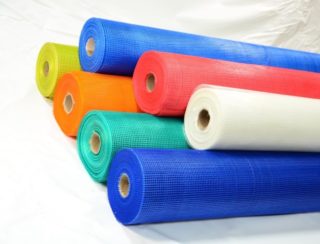
The material is offered in five basic colors, but there are also other shades. Each of them has some peculiarities.
Front protective mesh green color is intended for covering scaffolding and building objects. It is durable and attractive. It is customary to use a neutral color to hide buildings within the city, to demarcate areas.
Materials for production orange the mesh is polymer fibers. The color signals danger; this option is installed in areas with a high risk of accidents.
The most common plaster mesh option is white... It is resistant to alkaline conditions. It is used for indoor and outdoor use.
Reinforcing material made of blue fiberglass impregnated with polymer composition is recommended for installation in high humidity conditions. The fabric has a high tear resistance.
Threads yellow the fiberglass used to create the web is reinforced with polymer fibers. The reinforcing element has received high mechanical strength and resistance to negative factors due to a special impregnation from a mixture of acrylic and latex.
Selection rules
When choosing, take into account the technical characteristics of the product:
- Density - the value of the parameter ranges from 35 to 200 g / sq. m, the level of strength and wear resistance depends on it. The density of the weave determines the load capacity. If the web is weak, less than 75 gsm. m, it may not hold heavy debris or tools.
- Mesh size - characteristic is important for the throughput of the material. Small cells capture more moisture, dust, and protect well from sunlight. At the same time, they give a thick shadow, which may be undesirable. The choice of the cell size of the plaster mesh depends on the thickness of the mortar layer. For a thin layer, a fine-mesh fabric is required.
- Dimensions - the width and length of the product allows you to calculate the total covering area, rationally distribute the material.
When choosing, the area of application is first of all important. Focusing on the functions of the building material, the necessary characteristics are selected. For plaster nets, resistance to alkalis and elongation is important. Protective cloths must be durable, UV-resistant, weather-resistant.
Mesh fixation technology and installation
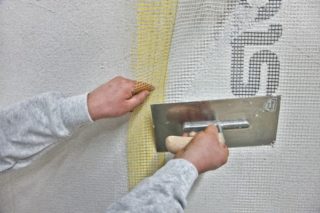
The technology for installing protective and plaster mesh has significant differences. The fastening of the canvases covering the facade is carried out vertically. They are fixed to the roof and various points of the scaffold structure. The strips are connected to each other with plastic clamps every 30 cm. If the canvas does not have special holes, it is fixed with plastic clips. The fixtures are installed with a step of 1-1.5 m, depending on the wind load. Another means of attachment is a nylon cord. It is resistant to moisture, frost, wear-resistant. The work of installing the mesh on the facade of the building is entrusted to industrial climbers.
Reinforcement for plastering a metal sheet begins with measurements. A piece of the required length is cut with metal scissors. The material is attached to the base with dowels and self-tapping screws along the entire length of the site. A polymeric or fiberglass mesh is laid on a layer of adhesive. The canvas straightens without creases and is slightly recessed in the solution. Another layer of plaster is applied on top.
A wide range of facade mesh allows you to choose the product that best suits your construction needs. Inexpensive and reliable material is indispensable as a temporary protection and reinforcing finishing element.

